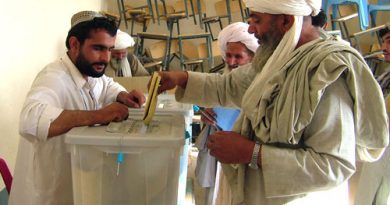Nixon, Kissinger, and the Shah Lecture by Dr. Roham Alvandi
Ali H. Aljarrah
Staff Writer
On Thursday, November 7, the College of Arts and Sciences’ Middle Eastern Studies Program organized a lecture on Dr. Roham Alvandi’s book Nixon, Kissinger, and the Shah: The United States and Iran in the Cold War.
Dr. Alvandi, an Associate Professor at the London School of Economics’ International History Department, said that he began his research on this project while writing his doctoral dissertation. His goal for the book was to challenge the narrative of the Shah being a “puppet for the United States.” In conducting his research, the distinguished Professor explained that he used a multitude of resources including declassified files from Nixon’s Presidential Library, the U.S.’s National Archives, and available Iranian sources.
The lecture, like the book, is divided into three parts: the first regarding Iran’s relationship with the United States from the 1960s through the 1970s; Nixon, Kissinger, and the Shah’s personal and political relationship; and Iran’s eroding relationship with the United States from Watergate to Carter’s presidency.
Dr. Alvandi began by describing how the United States filled the void left by the British when they pulled out of the Middle East in the 1960s due to cuts in defense spending. As a result, the Johnson administration chose to continue the British policy of maintaining the balance of power between Iran and Saudi Arabia. When Nixon entered the White House, his administration continued the policy of maintaining the balance of power until 1970 when they extended unlimited Foreign Military Sales (FMS) credit to the Shah, which in effect gave Iran primacy in the region. Given the establishment of the Richard Nixon Doctrine, Nixon and Kissinger believed Iran was best capable to counteract Soviet influence in the region compared to Saudi Arabia’s weak government.
Delving further into their relationship, Dr. Alvandi described Nixon’s view of the Shah as a “partner” in the region, compared to the “client” view of previous administrations. He continued to state that both men were, “geopolitical strategists who hated the same people and came from similar backgrounds.” With Iran’s new primacy in the region, Nixon infamously whispered, “Protect me,” to the Shah, as a sign of both Nixon’s expectations or Iran and a warning to the Shah’s rule.
With his status as a “partner”, the Shah convinced Nixon and Kissinger to help fund various military operations in or near the region, such as Iraq and Pakistan. Dr. Alvandi stated that the Shah understood that his region was vulnerable to Soviet influence and would make a case that Iran would counterbalance any Soviet threat. The Shah made the argument that because Iraq’s Baathist government is backed by the Soviets providing military aid through Iran to Iraqi Kurds, for their insurgency against the Iraqi government, would offset the Soviet threat.
Dr. Alvandi stated that the Shah’s ultimate ambition was to become a power player on the international stage. With the increase in oil revenues during the 1970s, he utilized the money to set Iran into action by providing foreign aid to other countries and designing grand naval strategies in the Indian Ocean.
However, as the Nixon White House was rattled by Watergate, so was the Shah’s partnership. Despite his ambition to become an influential member of the large international players, Nixon’s exit signified a return to the “client” view of the Shah, as U.S. policy would cause him to cut back on his bold plans. Furthermore, the investigation of the Nixon Administration’s showcased Congress’s dissatisfaction with Iran’s big military purchases and human rights violations. The entrance of the Carter Administration and their Human Rights Campaign in 1977 reflected Congress’s feelings towards the up and coming nation and pivoted U.S. policy to focus mainly on Iran’s domestic conduct.
In his closing, Dr. Alvandi stressed that although the Shah is depicted as many things, the Shah wasn’t a “megalomaniac” or a “puppet for the United States.” Yet two years after Carter was sworn in the Shah was deposed during the 1979 Revolution.


